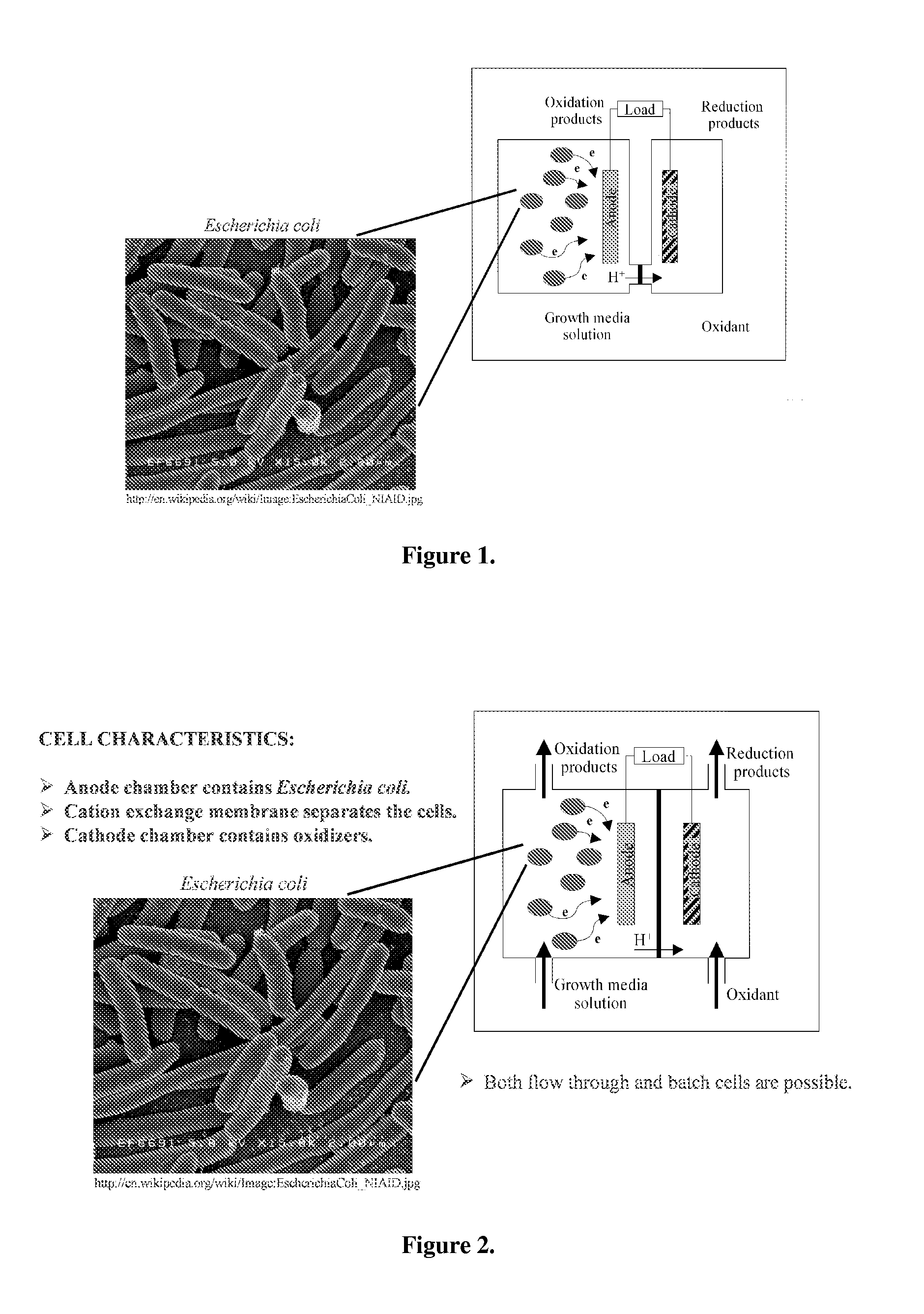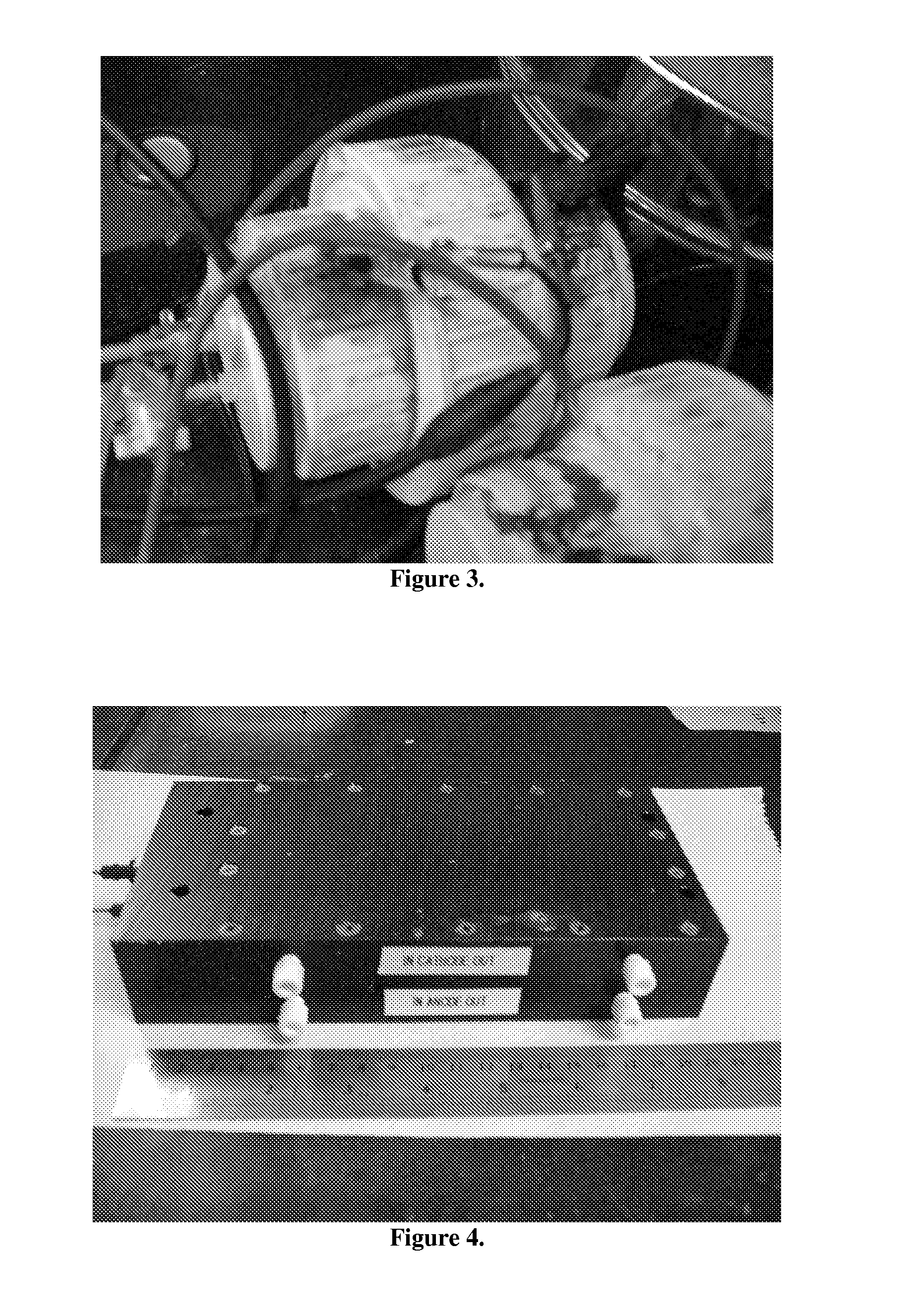Microbial fuel cell
- Summary
- Abstract
- Description
- Claims
- Application Information
AI Technical Summary
Benefits of technology
Problems solved by technology
Method used
Image
Examples
Embodiment Construction
[0020]The microbial fuel cell of the current invention is preferably comprised of two chambers separated by a cation exchange membrane. The anode chamber is a closed, or batch, system and contains a non-renewing suspension of microorganisms in media.
[0021]The, batch fuel cell, seen in FIG. 1, comprises an anode chamber containing E. coli (DH5α) in LB broth media. The LB broth is prepared as specified on the bottle, 25 g in 1 L and autoclaved for 15 minutes at 121° C. A cation exchange made of Nafion-117 (DuPont) or CMI-7000 (Membranes International Inc.) are employed. The cathode chamber contains deionized water and a halogenated salt oxidizer. The exemplary fuel cells employed trichloro isocyanuric acid or sodium dichloro isocyanuric acid. FIG. 2 shows an alternative embodiment, where the fuel cell is a flow through cell.
[0022]The anode and cathode are made from carbon mesh, with an area of about 18 cm2. The cathode also has a platinum or palladium coating on the electrode, which a...
PUM
 Login to View More
Login to View More Abstract
Description
Claims
Application Information
 Login to View More
Login to View More - R&D
- Intellectual Property
- Life Sciences
- Materials
- Tech Scout
- Unparalleled Data Quality
- Higher Quality Content
- 60% Fewer Hallucinations
Browse by: Latest US Patents, China's latest patents, Technical Efficacy Thesaurus, Application Domain, Technology Topic, Popular Technical Reports.
© 2025 PatSnap. All rights reserved.Legal|Privacy policy|Modern Slavery Act Transparency Statement|Sitemap|About US| Contact US: help@patsnap.com


